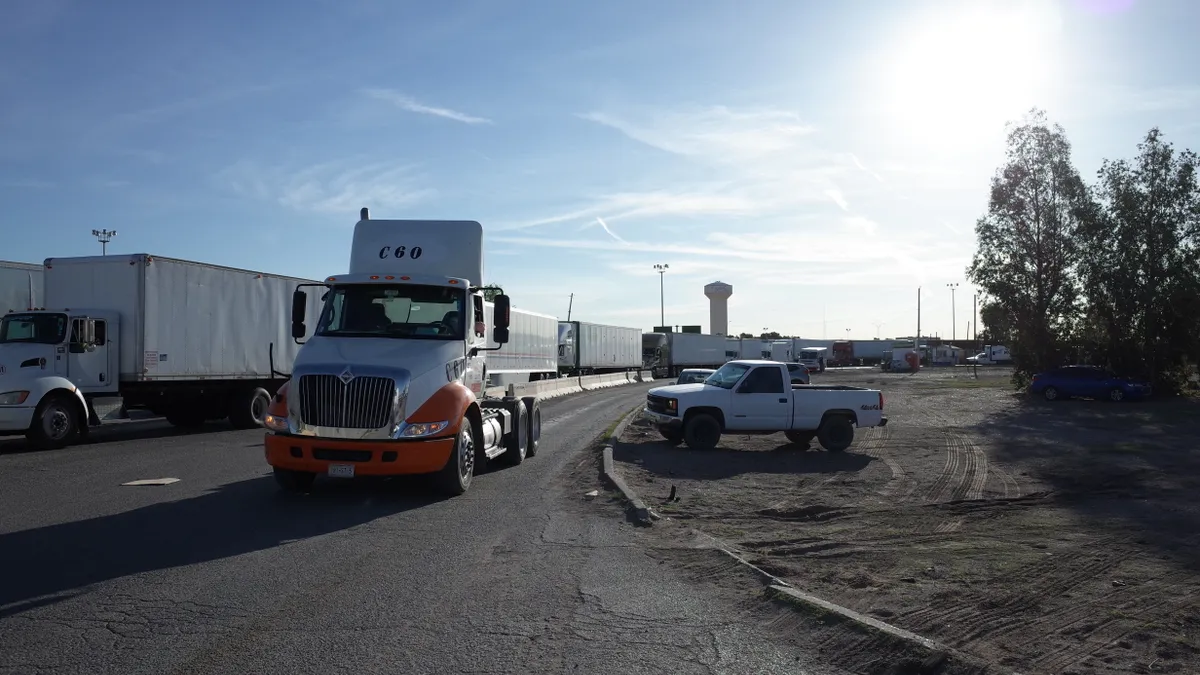ANAHEIM, Calif. — The new NAFTA, formally known as the U.S.-Mexico-Canada agreement (USMCA), would help streamline cross-border shipments and create uniformity for supply chains in North America, panelists told attendees at the CSCMP Edge conference in Anaheim, California, Monday.
"These provisions go further than any other free trade agreement," said Brent Connor, senior counsel at Thompson Hine, referring to Chapter 7 of the USMCA, which covers customs administration and trade facilitation. Jason Craig, director of government affairs for C.H. Robinson, described Chapter 7 as the chapter "supply chain professionals should be dialed into."
Among the provisions is a single window process, which allows the use of one data set to ship goods across borders of all three countries. Customs would function similarly to the European Union, where goods travel across several borders, according to Connor.
Kathleen Neal, global trade compliance director at Regal Beloit, said such a process makes sense given a shipment's data set remains constant, with the same description and tariff classification codes, throughout its journey across borders. "If you can set up a system where you can transmit that data and use that to fulfill the needs of all of the government agencies, that would be awesome for traders," she said.
Chapter 7 also streamlines brokerage operations in Mexico, according to Ben Bidwell, director of U.S. corporate customs brokerage at C.H. Robinson. As it stands, a Mexican customs broker can only operate in four ports, and USMCA would eliminate what Bidwell called the "arbitrary number." With that change, customs brokers could file at all ports of entry across their respective countries, creating a more streamlined process, he said.
Greater efficiency in cross-border freight has especially come into focus along the U.S.-Mexico border. A few months ago, border personnel were reassigned to handle migration, resulting in a bridge closing to commercial traffic. If a shipper wanted to reroute its cross-border freight to go through Laredo, Texas, instead of El Paso due to long wait times, the shipper may have had to forge a relationship with a new broker, leaving the shipper devoid of the "opportunity to respond to the market very quickly," Craig said.
Overall, the customs and trade facilitation aspects of USMCA go far deeper than the original NAFTA agreement. Craig said the previous trade deal had two to three pages about customs and trade, while USMCA has 30.
All panelists touted the benefits of USMCA and said they would vote for its passage if they were members of Congress. But they acknowledged potential changes to de minimis thresholds could prove problematic for certain shippers. Products that fall below the threshold are exempt from duties.
The U.S.' de minimis is currently at $800. Canada and Mexico are raising their de minimis levels as part of USMCA, Bidwell said. "However, what they're raising them to is still less than one third of our platform," he said.
Even though the text of the USMCA is complete, a footnote in the trade deal would allow the U.S. to lower its de minimis level to match Canada's or Mexico's. Opponents of such a change argue the current de minimis threshold is important to maintain because it benefits U.S. small businesses.
Still, all of the above effects of the USMCA are hypothetical. Mexico is the only nation that has so far passed the trade deal. Canada has elections upcoming in October, and the U.S. has to pass it through the trade promotion authority.
House Democrats have expressed concern over biological, environmental, labor and enforcement issues in the agreement. Last week, U.S. Trade Representative Robert Lighthizer sent House Democrats a letter addressing the concerns, Craig said. A source told Politico Lighthizer's counterproposal was a "step in the right direction" toward USMCA implementation.
"There's a lot of good will between the administration and the Democrats in the House," Craig said. "It's pleasantly surprising," adding the caveat, "that doesn't mean it can't change."















